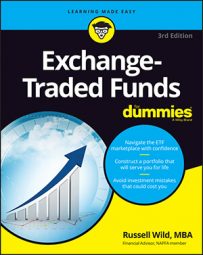Options on exchange-traded funds (ETF) are very hot, hot, hot right now! Options on some ETFs trade almost as actively as the underlying ETFs themselves. Selling covered calls is a traditional way that many people get started in the world of options. Here is how selling a covered call, otherwise known as a buy-write strategy, works:
You buy, say, 1,000 shares of the PowerShares QQQ Trust Series 1 ETF(QQQ). Let’s assume that the current price is $50 a share. You’ve just invested $50,000 (plus a small trading commission of perhaps $10 or so, which, for simplicity’s sake, we’ll ignore for the moment).
Now you sell a covered call. This means that, through a brokerage house, you offer someone else the right to purchase your shares at a certain price in the future. You may, for example, offer the right to purchase your 1,000 shares at $52 (the strike price) within 90 days (the expiration date).
You get paid for selling this right. In this scenario, you may be paid something in the ballpark of 75 cents a share for a total of $750 (roughly 2 percent of your original investment).
If, in the next 90 days, the QQQ stays between $50 and $52 (the market is relatively flat), your covered call expires worthless. You walk away with your $750, and life is good. (However, you will have to pay the IRS a short-term capital gains tax on that money.)
But now suppose that the market tanks: You are left holding 1,000 shares of the QQQ that may be worth much less than $50,000, the only offset being the $750 (before taxes) that you received.
And suppose the market soars: You just lost out, too. The QQQ may be selling at $60 a share, but the guy who bought your contract can buy your shares from you (and certainly will buy them from you, or will sell the option to someone else who will buy them from you) at the agreed-upon price of $52 a share.
In the end you will lose the difference between the actual value of your QQQ shares and their value at the strike price, again offset only by the soon-to-be-reduced-by-taxes $750 that you received when you sold the option.
And there’s the catch. a good number of investors rave about their experiences with covered calls . . . as long as the markets are relatively stagnant. As soon as there is major movement either up or down — which has been known to happen — they stop raving and start ranting.
In the past few years, we’ve seen the introduction of several exchange-traded products that allow you to buy a basket of covered calls. These include the PowerShares S&P 500 BuyWrite Portfolio ETF (PBP) and the iPath CBOE S&P 500 BuyWrite Index ETN (BWV).
Both have expense ratios of 0.75 percent. Both were introduced in 2007. Both have lost money. A third, similar fund, the PowerShares NASDAQ-100 BuyWrite Portfolio ETF, was delisted (i.e., it folded) in 2010. Will these funds ever make money? Yes . . . if we see several years of a flat market. What are the chances of that?

